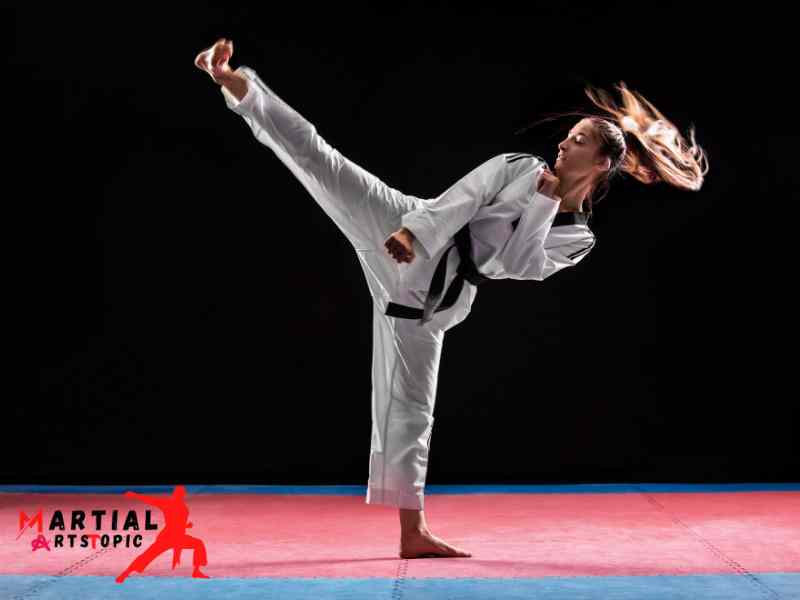
A Beginner’s Guide to Chinese Martial Arts
Chinese martial arts, also known as wushu or kung fu, have a rich history and a long-standing tradition that has captivated people around the world. Renowned for their unique techniques, philosophical underpinnings, and impressive physical prowess, Chinese martial arts offer a holistic approach to self-defense, fitness, and spiritual growth. The best Chinese martial arts styles, delving into their origins, key techniques, and the benefits they offer.
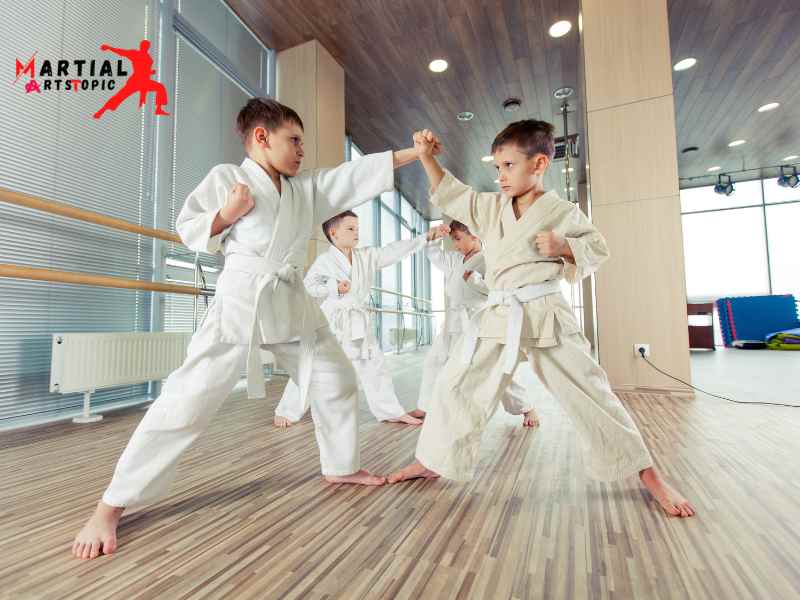
When we think of Chinese martial arts, the legendary Shaolin Kung Fu immediately comes to mind. Originating from the Shaolin Temple in Henan Province, this style emphasizes strength, flexibility, and explosive power. With a wide range of techniques including punches, kicks, and grappling moves, Shaolin Kung Fu is a comprehensive martial art that builds both physical and mental discipline.
- Wing Chun, a style famously practiced by the legendary Bruce Lee, is a close-quarters combat system that focuses on efficiency and directness. Known for its lightning-fast strikes and precise footwork, Wing Chun is ideal for self-defense situations. It emphasizes relaxation, sensitivity, and the ability to intercept an opponent’s attacks, making it suitable for practitioners of all ages and body types.
- Tai Chi is a Chinese martial art that is often referred to as a moving meditation. This internal martial art combines slow, flowing movements with deep breathing and mental focus. Tai Chi is renowned for its health benefits, promoting relaxation, improved balance, and flexibility. Its gentle and graceful movements make it accessible to people of all ages and fitness levels.
- Baguazhang, or Eight Trigram Palm, is a circular martial art that emphasizes continuous movement, evasion, and quick footwork. Practitioners walk in a circular pattern, using agile footwork to generate power and confuse opponents. Baguazhang incorporates various strikes, joint locks, and throws, making it an effective martial art for self-defense and overall body conditioning.
- Xingyiquan, also known as Form-Intention Boxing, is a martial art that focuses on explosive power and direct linear movements. It is based on the concept of imitating the movements and characteristics of certain animals, such as the dragon, tiger, and hawk. Xingyiquan is highly effective for close-quarters combat, employing powerful punches, kicks, and stomps to overwhelm opponents.
Best Chinese Martial Arts
Best Chinese martial arts, also known as Kung Fu, encompass a rich and diverse tradition that has captivated practitioners and enthusiasts for centuries. From the flowing movements of Tai Chi to the explosive power of Shaolin Kung Fu, the best Chinese martial arts offer a blend of physical prowess, mental discipline, and cultural heritage. Whether you’re drawn to the grace and fluidity of Wushu or the practical self-defense techniques of Wing Chun, there’s a style to suit every individual. Exploring the world of Chinese martial arts not only provides a means of physical fitness and self-defense, but also offers a profound connection to Chinese culture and philosophy. With a multitude of styles and techniques to discover, delving into the realm of Chinese martial arts promises an enriching and rewarding journey.
The History and Origins of Chinese Martial Arts
Chinese martial arts, also known as Wushu or Kung Fu, has a rich and fascinating history that spans thousands of years. Renowned for their fluid movements, powerful techniques, and philosophical foundations, Chinese martial arts have captivated practitioners and enthusiasts around the world. The origins and development of Chinese martial arts, shedding light on why they are considered some of the best in the world.
We can trace the beginnings of Chinese martial art back to ancient times, with evidence of martial arts practices dating as far back as the Xia Dynasty (c. 2100–1600 BCE). It initially developed these practices as a means of survival, with early Chinese civilizations using combat techniques to protect themselves against wild animals and rival tribes. Over time, martial arts evolved from simple self-defense techniques into a sophisticated system of combat and personal development.
One of the earliest known forms of Chinese martial art is Shaolin Kung Fu. Originating from the famous Shaolin Temple in Henan province, this style of martial arts gained prominence during the Tang Dynasty (618–907 CE). Its emphasis characterized Shaolin Kung Fu on physical strength, flexibility, and spiritual enlightenment. Practitioners of Shaolin Kung Fu undergo rigorous physical training, meditation, and discipline to achieve a harmonious balance between the mind and body.
Another influential style of Chinese martial art is Tai Chi Chuan. Developed during the Ming Dynasty (1368–1644 CE), they knew Tai Chi Chuan for its slow, graceful movements and focus on internal energy cultivation. Often referred to as a moving meditation, Tai Chi Chuan promotes relaxation, balance, and overall well-being. Something widely practiced it as a form of exercise, stress relief, and a means of promoting mental clarity.
In addition to Shaolin Kung Fu and Tai Chi Chuan, there are numerous other styles of Chinese martial arts that have gained recognition for their unique characteristics and contributions to the martial arts world. These include Wing Chun, Baguazhang, Xingyiquan, and many more. Each style has its own distinct techniques, philosophies, and training methods, making Chinese martial art a diverse and ever-strengthened discipline.
Chinese martial art have not only influenced combat techniques, but have also had a significant impact on various forms of entertainment. From movies to literature, the influence of Chinese martial arts can be seen in popular culture worldwide. Martial arts legends like Bruce Lee and Jackie Chan have brought the beauty and power of Chinese martial arts to the big screen, captivating audiences with their awe-inspiring skills and performances.
Today, Chinese martial art continue to thrive, with millions of practitioners and schools spread across the globe. The benefits of practicing Chinese martial arts are vast and encompass physical fitness, self-defense skills, mental clarity, and personal growth. Whether you’re seeking to improve your physical health or delve into the philosophical aspects of martial arts, Chinese martial arts offer a holistic approach that caters to a wide range of interests and goals.
Types and Styles of Chinese Martial Arts
Best Chinese Martial Arts: The Types and Styles Chinese martial arts, also known as Wushu or Kung Fu, are renowned worldwide for their rich history, intricate techniques, and profound cultural significance. With a wide array of styles and types, Chinese martial arts have captivated the imagination of martial arts enthusiasts and practitioners for centuries.The best Chinese martial arts, exploring their distinct characteristics, techniques, and philosophies.
Shaolin Kung Fu: The Legendary Art
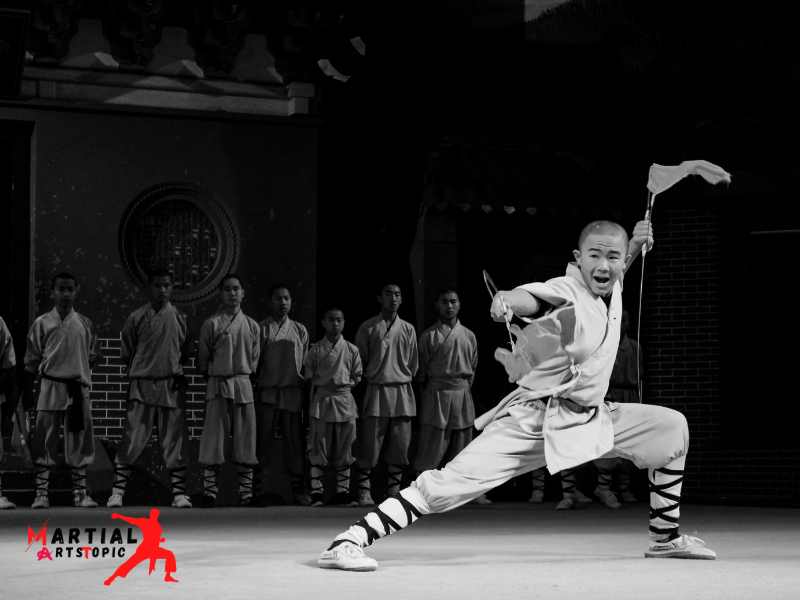
Shaolin Kung Fu, originating from the Shaolin Temple in Henan Province, is one of the most iconic and influential styles of Chinese martial arts. Known for its graceful yet powerful movements, Shaolin Kung Fu emphasizes both external and internal training. Practitioners of Shaolin Kung Fu develop exceptional strength, flexibility, and discipline while mastering a wide range of techniques, including punches, kicks, and acrobatics.
Tai Chi: The Art of Harmony
Tai Chi, often referred to as a moving meditation, is a martial art that focuses on cultivating internal energy, or Qi. With its slow and flowing movements, Tai Chi promotes balance, relaxation, and inner peace. While they widely practiced it for health benefits, Tai Chi also has practical applications in self-defense. The gentle nature of Tai Chi makes it accessible to people of all ages and fitness levels.
Wing Chun: The Efficient Style
Wing Chun, renowned for its speed and efficiency, is a close-range combat system that originated in southern China. Developed by a female martial artist, Wing Chun emphasizes simultaneous attack and defense, utilizing quick strikes and trapping techniques. Wing Chun’s simplicity and directness make it a popular choice for self-defense training.
Wudangquan: The Taoist Martial Art
Wudangquan, derived from the Wudang Mountains in Hubei Province, focuses on the harmonization of body, mind, and spirit. Drawing inspiration from Taoist philosophy, Wudangquan practitioners aim to achieve balance and internal energy cultivation. Known for its graceful movements, Wudangquan combines both soft and hard techniques, making it a versatile and holistic martial art.
Baguazhang: The Art of Circular Footwork
Baguazhang, also known as Eight Trigram Palm, is a unique martial art that emphasizes circular footwork and continuous flowing movements. Developed based on the principles of the I Ching, Baguazhang practitioners learn to swiftly change directions and adapt to different situations. The circular movements of Baguazhang are not only effective in combat but also contribute to improved flexibility, coordination, and overall health.
Praying Mantis Kung Fu: The Mimicking Style
Praying Mantis Kung Fu derives its name from the distinctive hand movements that resemble a praying mantis. Known for its aggressive and rapid techniques, Praying Mantis Kung Fu focuses on close-range combat, joint locks, and throws. The style’s versatility and adaptability have made it a popular choice among martial arts enthusiasts.
Xingyiquan: The Form and Mind Boxing
Xingyiquan, also known as Form and its explosive and linear movements, characterizes Mind Boxing. Rooted in the concept of imitating the movements of twelve animals, Xingyiquan emphasizes powerful strikes and continuous forward momentum. Xingyiquan’s direct and straightforward approach makes it an effective martial art for self-defense.
Traditional vs. Contemporary: The Evolution of Chinese Martial Arts
Traditional vs. Contemporary: The Evolution of Chinese Martial Arts Chinese martial arts, also known as Kung Fu, has a rich and diverse history that dates back thousands of years. Over time, these martial arts have developed and transformed, giving rise to both traditional and contemporary styles. The differences between these two approaches and delve into the fascinating evolution of Chinese martial arts.
When it comes to Chinese martial arts, there is no shortage of options. From the elegant movements of Tai Chi to the explosive power of Wing Chun, each style offers its own unique techniques and philosophies. Traditional Chinese martial arts are deeply rooted in ancient traditions and are often passed down through generations. These styles emphasize discipline, respect, and the preservation of cultural heritage.
One of the most well-known traditional Chinese martial arts is Shaolin Kung Fu. Originating from the legendary Shaolin Temple, its rigorous training methods and emphasis characterized this style on physical strength and endurance. Practitioners of Shaolin Kung Fu often demonstrate impressive acrobatics and powerful strikes, showcasing the importance of both physical and mental discipline.
On the other hand, contemporary Chinese martial arts have emerged as a response to the changing landscape of combat sports and self-defense. With the rise of mixed martial arts (MMA) and other competitive fighting disciplines, many practitioners have sought to integrate modern training methods and techniques into traditional Chinese martial arts.
One such example is Sanda, also known as Chinese kickboxing. Sanda combines elements of traditional Kung Fu with Western boxing, kickboxing, and wrestling techniques. This fusion of styles creates a dynamic and versatile fighting system that is highly effective in both self-defense and combat sports competitions.
In addition to Sanda, contemporary Chinese martial arts have also seen the rise of Wushu, a modern performance-oriented style that showcases breathtaking acrobatics, flexibility, and choreographed forms. Wushu has gained international recognition through its inclusion in major sporting events, such as the Asian Games and the World Wushu Championships.
While traditional Chinese martial arts focus on preserving ancient techniques and cultural heritage, contemporary styles often prioritize practicality, adaptability, and competition. However, it is essential to note that both traditional and contemporary Chinese martial arts share a common goal: to develop physical and mental strength, cultivate discipline, and promote overall well-being.
So, which is the best Chinese martial art? The answer ultimately depends on your personal goals and preferences. If you are interested in delving into the rich history and cultural traditions of Chinese martial arts, traditional styles such as Shaolin Kung Fu and Tai Chi might be the perfect fit. On the other hand, if you are looking for a more dynamic and competitive experience, contemporary styles like Sanda and Wushu may be more appealing.
So, why wait? Begin your martial arts journey today and discover the best Chinese martial art that resonates with you. Whether you choose to embrace tradition or explore modern techniques, the world of Chinese martial arts awaits, ready to empower and transform you both physically and mentally.
Health Benefits of Chinese Martial Arts
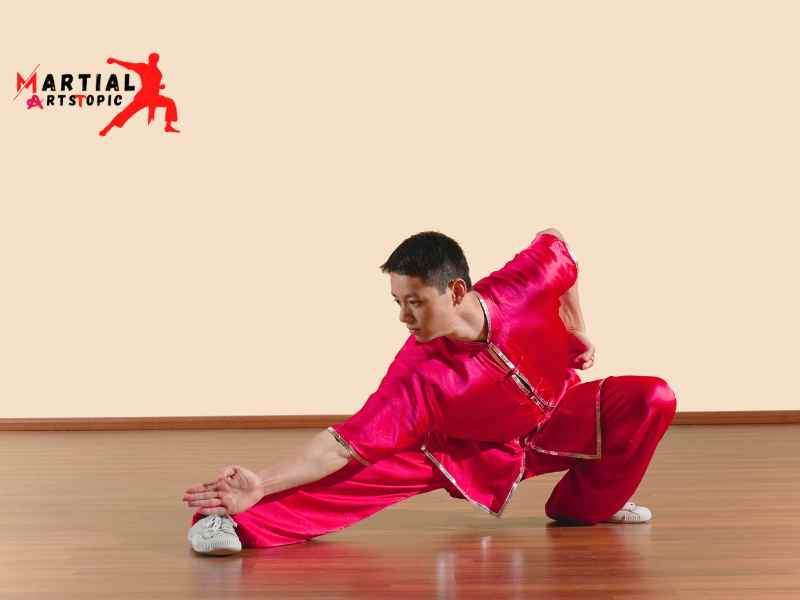
The Best Chinese Martial Arts: Unveiling the Health Benefits Chinese martial arts, also known as Wushu or Kung Fu, have captivated the world for centuries with their graceful and powerful movements. Beyond being self-defense or entertainment, these ancient practices offer a plethora of health benefits that have captured the attention of fitness enthusiasts and health-conscious individuals worldwide.
The fascinating world of Chinese martial arts and explore some of the incredible health benefits they offer. From improved physical fitness to enhanced mental well-being, let’s discover why Chinese martial arts are considered the best.
- Boosts Physical Fitness: Chinese martial arts are renowned for their ability to enhance physical fitness levels. The demanding nature of the movements, such as kicks, punches, and acrobatics, challenges the cardiovascular system, improves endurance, and increases strength and flexibility. Regular practice of Chinese martial arts can lead to weight loss, improved muscle tone, and overall enhanced physical fitness.
- Enhances Mental Focus:The practice of Chinese martial arts requires concentration, discipline, and mental focus. The intricate choreography of movements, combined with the need for precision and timing, helps to sharpen the mind and improve cognitive abilities. By training the mind to stay focused, practitioners of Chinese martial arts can experience increased mental clarity and improved concentration in other areas of their lives.
- Promotes Emotional Well-being:Chinese martial arts emphasize the balance between body and mind. Through the practice of controlled breathing and meditation techniques, practitioners can cultivate a sense of inner peace and tranquility. Regular practice can reduce stress, anxiety, and depression, promoting emotional well-being and improving overall mental health.
- Increases Self-confidence:Chinese martial arts provide practitioners with a sense of achievement and self-confidence. As individuals progress through the various levels and master new techniques, they gain a sense of accomplishment and develop a positive self-image. This newfound self-confidence often extends beyond the training hall, positively affecting all aspects of life.
- Improves Coordination and Balance:Chinese martial arts require precise movements and impeccable coordination. By practicing techniques that engage the entire body, practitioners can improve their balance, coordination, and overall body awareness. It can transfer these skills to everyday activities, reducing the risk of falls and enhancing overall physical well-being.
- Cultivates Discipline and Self-control:Chinese martial arts have long been associated with discipline and self-control. The rigorous training regimes and adherence to ancient traditions demand focus, dedication, and self-discipline. Through the practice of Chinese martial arts, individuals can develop a strong sense of discipline, self-control, and respect for themselves and others.
- Strengthens the Immune System:Regular exercise, such as practicing Chinese martial arts, has been proven to boost the immune system. The physical activity stimulates the production of antibodies and enhances the body’s natural defense mechanisms, making practitioners more resistant to illnesses and infections.
Chinese Martial Arts Weapons: From Swords to Staffs
Chinese Martial Arts Weapons: From Swords to Staffs Chinese martial arts, also known as Kung Fu, has a rich history and is renowned for their diverse range of weapons. From the elegant and deadly swords to the powerful and versatile staffs, these weapons have played a significant role in the development and practice of Chinese martial arts.The best Chinese martial arts weapons and their fascinating history.
- Jian (Straight Sword): The Jian is perhaps the most iconic Chinese martial arts weapon. Known for its quick and precise strikes, the Jian is a double-edged straight sword that requires speed, agility, and precision to wield effectively. It is often associated with elegance and grace and is commonly used in Wushu, a modern form of Chinese martial arts.
- Dao (Broadsword): The Dao is a single-edged, curved sword that symbolizes power and strength. We know this weapon for its slashing and chopping techniques, making it a formidable choice for close combat. The Dao is often featured in Chinese historical dramas and is widely recognized for its association with legendary martial arts heroes.
- Qiang (Spear): The Qiang is a long polymer weapon with a spearhead, making it one of the most versatile weapons in Chinese martial arts. They commonly used it for thrusting, striking, and blocking techniques. The Qiang requires a combination of strength and technique to master, making it a popular weapon among martial arts enthusiasts.
- Nunchaku: The Nunchaku is a unique weapon consisting of two sticks connected by a chain or rope. Made famous by Bruce Lee, they knew this weapon for its lightning-fast strikes and unpredictable movements. The Nunchaku requires excellent hand-eye coordination and reflexes, making it a favorite weapon for practitioners who emphasize speed and agility.
- Gun (Staff): The Staff, also known as the Gun, is one of the oldest and most traditional Chinese martial arts weapons. We know this long wooden weapon for its simplicity and effectiveness. They can use the Staff for striking, blocking, and even throwing techniques. It requires strength and balance to wield, making it an excellent choice for both offense and defense.
The Health Benefits of Practicing Chinese Martial Arts
The Health Benefits of Practicing Chinese Martial Arts Chinese martial arts, also known as Wushu or Kung Fu, have been practiced for centuries and are renowned for their physical, mental, and spiritual benefits. Not only are they a fascinating form of self-defense and combat, but they also offer numerous health benefits that can improve your overall well-being. The best Chinese martial arts and the positive impact they can have on your health.
- Improved Physical Fitness: Engaging in Chinese martial arts requires a high level of physical fitness. It involves rigorous training that includes strength and endurance exercises, flexibility drills, and cardiovascular workouts. Regular practice of Chinese martial arts can help you build lean muscle mass, increase stamina, and improve overall physical performance.
- Weight Loss and Body Toning: If you are looking to shed some extra pounds, Chinese martial arts can be an effective way to achieve your fitness goals. The intense and dynamic movements involved in these martial arts styles can help you burn calories, boost metabolism, and promote weight loss. Additionally, the combination of strength training and cardio exercises can help tone your muscles and improve your body composition.
- Stress Relief and Mental Well-being: In today’s fast-paced world, stress and anxiety have become common challenges. Chinese martial arts provide an excellent outlet to release stress and improve mental well-being. The focus required during training helps clear the mind and promotes mindfulness. The discipline and self-control instilled in practitioners can translate into other areas of life, helping to manage stress more effectively.
- Increased Flexibility and balance: Chinese martial arts emphasize the importance of flexibility and balance. The various stretching exercises and movements performed in Wushu or Kung Fu can improve your range of motion, increase joint flexibility, and enhance overall body balance. These benefits are not only crucial for martial arts practice but also for preventing injuries in daily activities.
- Cardiovascular Health: Engaging in Chinese martial arts involves constant movement, which provides an excellent cardiovascular workout. The combination of aerobic and anaerobic exercises helps improve heart and lung function, increase blood circulation, and lower the risk of cardiovascular diseases. Regular practice can also help regulate blood pressure and cholesterol levels.
- Enhanced Focus and Concentration: Chinese martial arts demand a high level of focus and concentration. The intricate techniques and complex sequences require mental alertness and precision. By practicing regularly, you can develop enhanced focus, concentration, and mental agility, which can be beneficial in various aspects of life, including work or academics.
- Self-Confidence and discipline: Chinese martial arts are not just about physical prowess; they also emphasize personal growth and self-improvement. Through consistent training and practice, practitioners develop self-confidence, discipline, and a strong sense of self-belief. These qualities can positively affect other areas of life, such as relationships, career, and personal goals.
The Evolution of Chinese Martial Arts in Modern Times
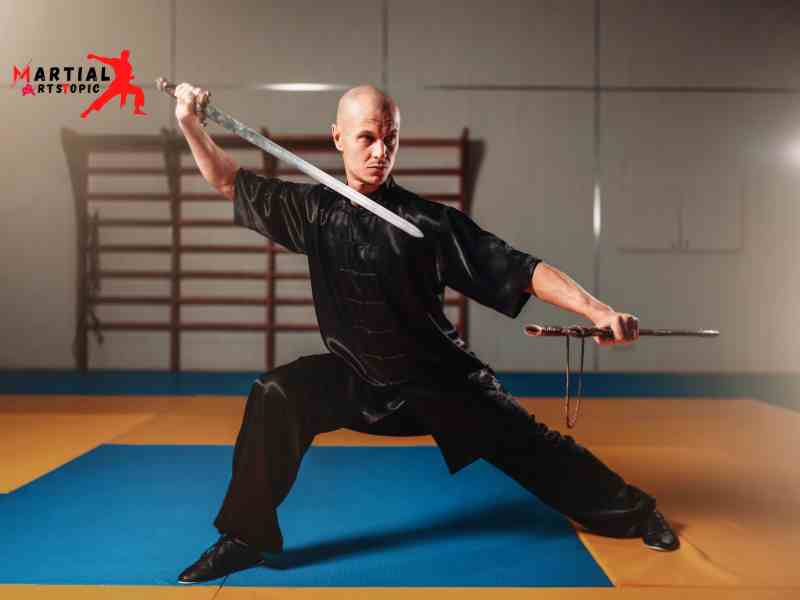
The Evolution of Chinese Martial Arts in Modern Times Chinese martial arts, also known as Wushu or Kung Fu, has a rich history that spans thousands of years. These ancient fighting techniques have not only played a significant role in China’s culture and tradition, but have also gained global recognition for their effectiveness and beauty. The evolution of Chinese martial arts in modern times and discuss some of the best Chinese martial arts styles that practitioners can learn today.
Over the centuries, Chinese martial arts have developed and adapted to changing times and circumstances. In ancient times, it mainly developed martial arts for combat and self-defense purposes. Warriors and soldiers would train rigorously to master various techniques, including strikes, kicks, throws, and grappling maneuvers.
However, with the passage of time, Chinese martial arts began to transcend their military origins and became more than just a means of fighting. They started to incorporate philosophical and spiritual elements, focusing on personal development, discipline, and self-cultivation. The practice of martial arts became a way of life, promoting physical, mental, and spiritual well-being.
In modern times, Chinese martial arts have gained popularity not only as self-defense but also as a means of improving fitness, reducing stress, and enhancing overall health. People from all walks of life, regardless of age or gender, are embracing these ancient practices for their numerous benefits.
Now, let’s delve into some of the best Chinese martial arts styles that have made a significant impact in modern times:
- Wing Chun: Known for its practicality and efficiency, Wing Chun is a close-range combat style that focuses on quick, direct strikes and simultaneous defense. It emphasizes speed, agility, and sensitivity, making it an ideal martial art for self-defense in real-life situations.
- Tai Chi: Tai Chi is a slow and graceful martial art that combines gentle flowing movements with deep breathing and meditation. It promotes relaxation, balance, and harmony, making it an excellent choice for stress reduction, improving flexibility, and enhancing overall well-being.
- Shaolin Kung Fu: Originating from the famous Shaolin Temple, Shaolin Kung Fu is one of the oldest and most widely recognized Chinese martial arts styles. It encompasses a wide range of techniques, including kicks, punches, acrobatics, and weapon training. Practicing Shaolin Kung Fu not only improves physical strength and endurance but also cultivates discipline, focus, and mental clarity.
- Baguazhang: Baguazhang is a unique martial art that emphasizes circular footwork and continuous flowing movements. We know it for its evasive techniques and unpredictable changes in direction, making it highly effective for self-defense. Baguazhang also promotes improved coordination, balance, and flexibility.
- Xingyi Quan: Translated as “Shape-Will Boxing,” Xingyi Quan is a powerful and aggressive martial art that focuses on explosive linear movements and the generation of internal power. Its straightforward approach to combat characterized it, making it an effective style for both self-defense and physical conditioning.
These are just a few examples of the best Chinese martial arts styles that have gained popularity in modern times. However, it’s essential to remember that each style has its unique characteristics and advantages. The best martial art for an individual ultimately depends on their personal goals, preferences, and physical abilities.
Training Like a Warrior: Tips for Practicing Chinese Martial Arts
Best Chinese Martial Arts: Tips for Training Like a Warrior Chinese martial arts, also known as Wushu or Kung Fu, have a rich history that dates back thousands of years. These ancient combat systems have gained immense popularity worldwide for their unique combination of physical fitness, self-defense techniques, and mental discipline. If you are looking to embark on a journey to master the art of Chinese martial arts, we’ve got you covered. The best tips and techniques to help you become a warrior in these ancient arts.
- Find a Reputable Instructor: The first step in your Chinese martial arts journey is to find a reputable instructor who can guide you through the techniques and philosophies of the art. Look for someone with extensive experience and a strong lineage in the specific style you wish to practice. A good instructor will not only teach you the physical aspects but also help you develop the mental focus and discipline required to excel in Chinese martial arts.
- Start with the Basics: it built Chinese martial arts upon a strong foundation of basic movements and techniques. It is essential to start your training by mastering these fundamentals. Focus on building your strength, flexibility, and coordination through exercises like stretching, stances, and basic strikes. This solid foundation will serve as the building blocks for advanced techniques.
- Embrace Discipline and Patience: Chinese martial arts require discipline and patience. It is not a quick path to mastery. Embrace the journey and understand that progress takes time. Consistency in training and a willingness to push yourself beyond your comfort zone will yield great results in the long run.
- Train Your Mind: Chinese martial arts are not just about physical strength and technique; they also emphasize mental fortitude and focus. Incorporate meditation and visualization techniques into your training routine to enhance your mental clarity and concentration. This will not only improve your performance but also help you in daily life.
- Practice Qi Gong: Qi Gong is an integral part of Chinese martial arts. It is a system of breathing exercises and meditation that helps cultivate and balance your body’s vital energy, known as Qi. Regular practice of Qi Gong will enhance your overall health, boost your energy levels, and improve your martial arts performance.
- Explore Different Styles: Chinese martial arts encompass a wide range of styles, each with its unique techniques and philosophies. Don’t limit yourself to just one style; explore different styles to broaden your understanding and skill set. This will make you a more well-rounded martial artist and enable you to adapt to different situations.
- Train with Weapons: Chinese martial arts involve the use of various traditional weapons such as swords, staffs, and spears. Incorporating weapon training into your practice will not only enhance your overall skills but also provide a deeper understanding of the art’s principles and history.
- Stay Fit and Flexible: Chinese martial arts demand a high level of physical fitness and flexibility. Regular cardiovascular exercises, strength training, and stretching routines will help you stay fit and prevent injuries. Flexibility exercises such as yoga or Tai Chi will improve your range of motion and allow you to execute techniques with ease.
- Participate in Competitions: If you’re interested in testing your skills and measuring your progress, consider participating in martial arts competitions. Competitions provide a platform to showcase your abilities, learn from other practitioners, and gain valuable experience.
- Immerse Yourself in Chinese Culture: it deeply rooted Chinese martial arts in Chinese culture, history, and philosophy. To fully appreciate and understand the art, immerse yourself in Chinese culture. Read books, watch movies, and explore the history and traditions associated with the martial art you practice.
In conclusion
Chinese martial arts have a rich and captivating history, with various styles and techniques that have been passed down for generations. From the graceful movements of Tai Chi to the explosive power of Wing Chun, these martial arts not only offer physical benefits but also promote mental discipline and spiritual growth. The dedication and commitment required to master these arts are truly commendable. Whether you are seeking self-defense skills, physical fitness, or a deeper connection with your mind and body, Chinese martial arts provide a holistic approach to personal development. By immersing yourself in the world of Chinese martial arts, you can embark on a journey of self-discovery and embrace the beauty and power of this ancient practice.
